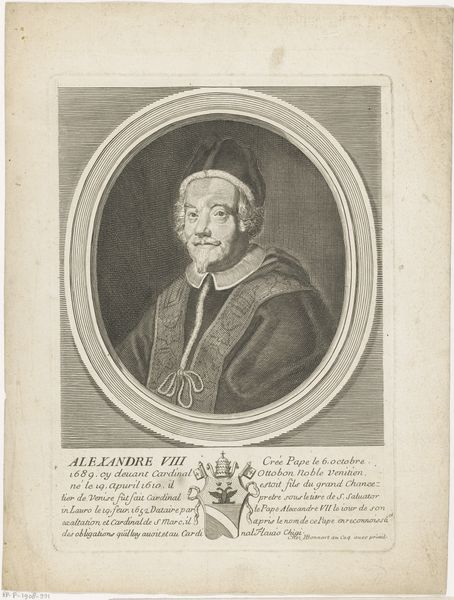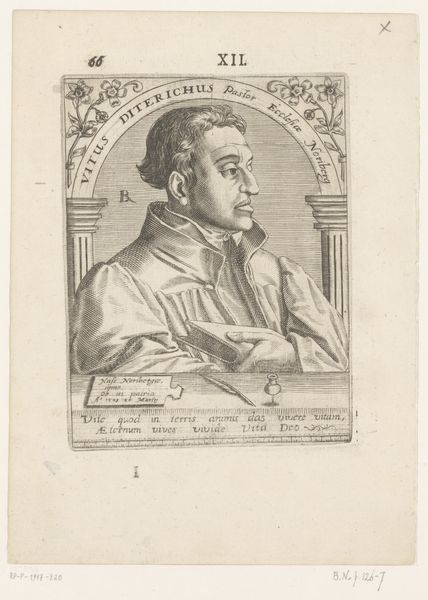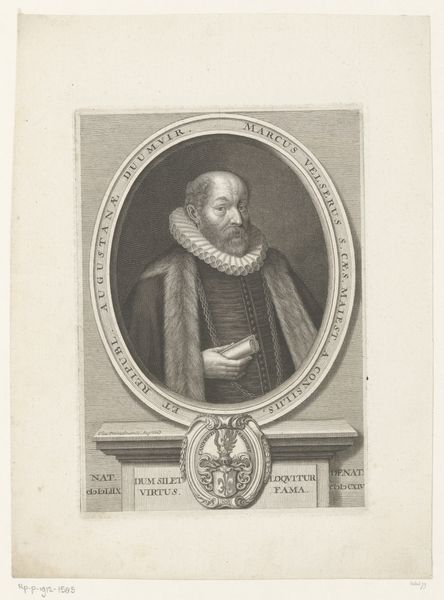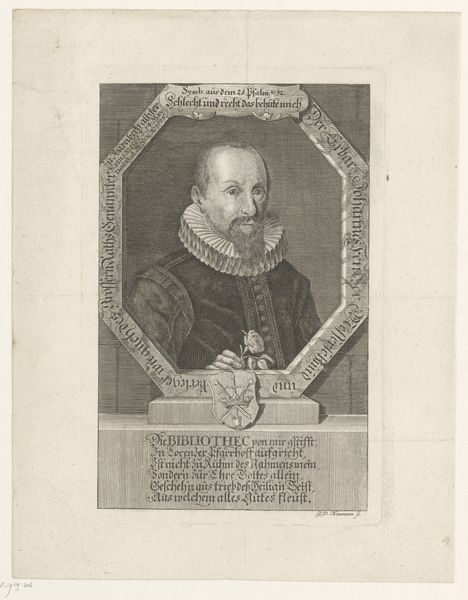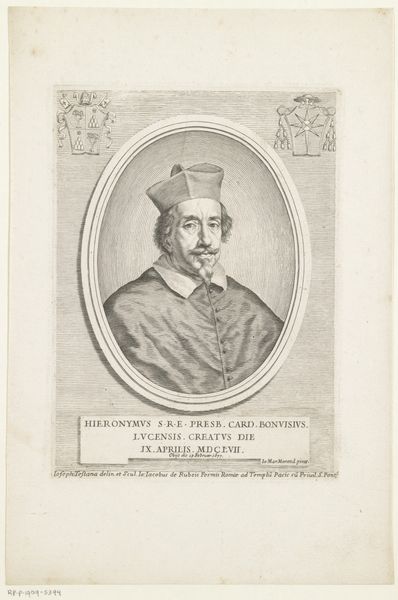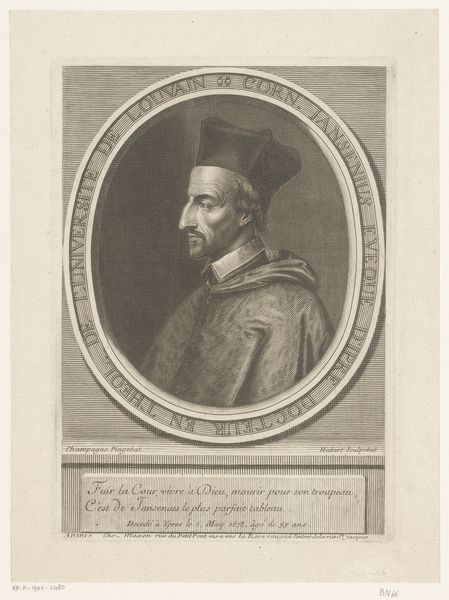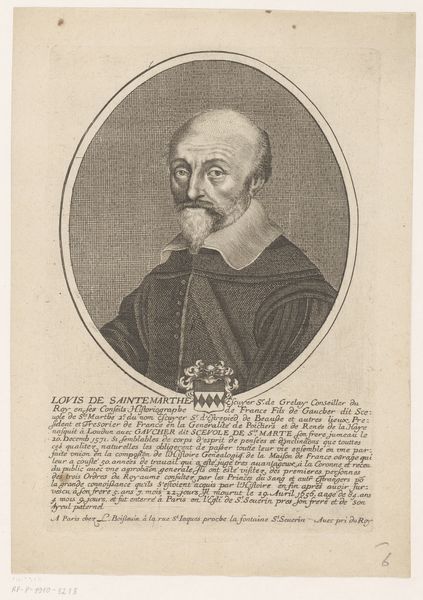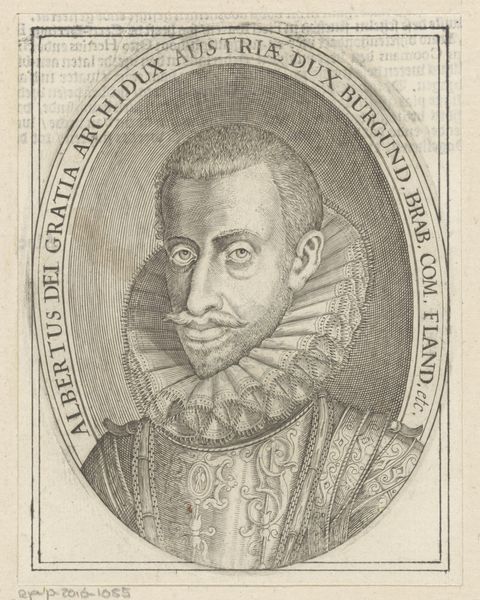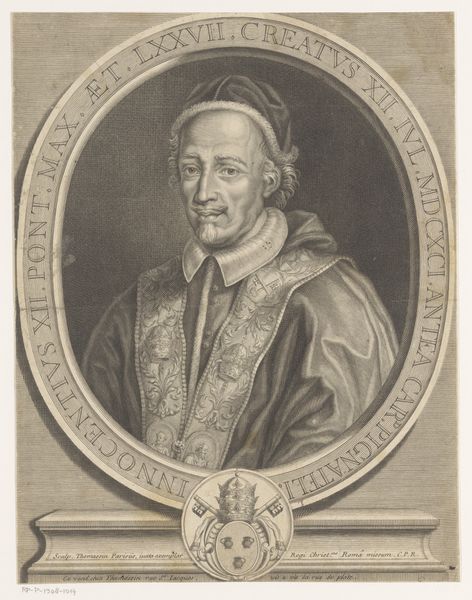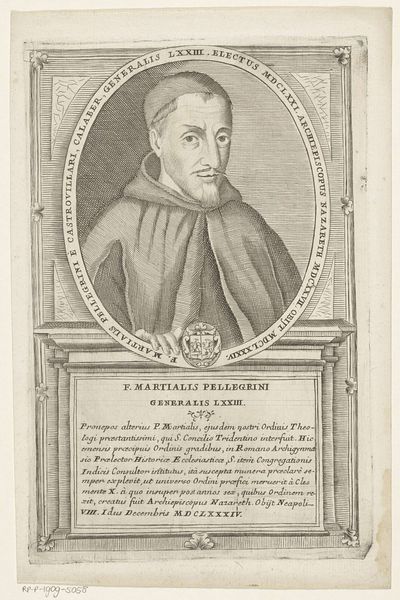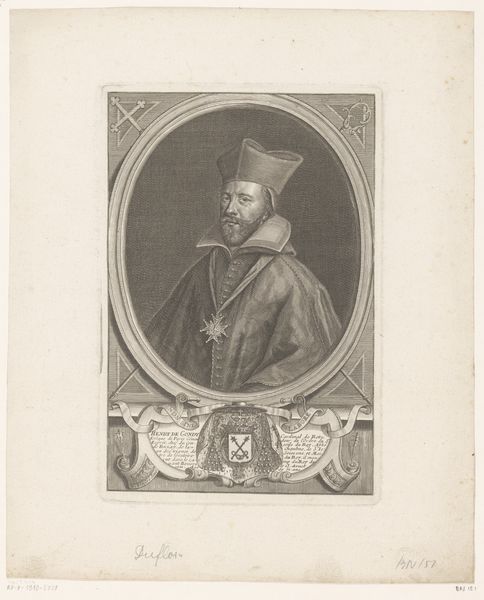
etching, paper, engraving
#
portrait
#
baroque
#
etching
#
old engraving style
#
paper
#
history-painting
#
engraving
Dimensions: height 201 mm, width 136 mm
Copyright: Rijks Museum: Open Domain
Curator: Let's discuss this portrait of Pope Alexander VII, created between 1633 and 1676 by Jean Frosne. It’s an engraving, giving us a glimpse into the papacy during the Baroque period. Editor: My first impression is one of intense observation, like the Pope's gaze is meant to capture the soul. There's a severity despite the soft hatching of the etching. Almost intimidating. Curator: The portrait captures a man navigating a period of immense political and religious tension. Alexander VII's papacy was defined by diplomatic maneuvering and intellectual pursuits, which are inevitably imprinted onto his likeness. What’s interesting to unpack is the complex image of power this etching aims to project to the masses. Editor: Absolutely. Considering the socio-political role of the papacy, especially then, this image isn't just a likeness; it's carefully crafted propaganda. The subtle arrogance, the very deliberate composure of a supreme figure... How complicit was Frosne as the artist, do you think? Were they acting on their convictions or simply reproducing someone's power? Curator: Frosne operated within a very specific patronage system. It is most likely that there would be clear guidelines on the portrayal, especially when you look at how standardised these depictions would be at the time, with just very subtle variation. The clothing for example signifies an order in the hierachy that Frosne could not simply remove as the artist of the work. I agree that thinking of complicity raises valid questions on identity, the self and how we interact with power. Editor: What impact did his position of power, along with his gender and race, have on Frosne when he developed the composition, technique, and presentation, particularly with such fine detail? The medium, paper, makes it ephemeral too. Despite all of the effort involved it can easily be crumpled, ruined or forgotten. What power did Frosne really have in this system? Curator: These images often acted as ways to legitimise that power in the first place - so your comment hits a pertinent spot in that paradox, where power needs art for that constant (re)affirming to happen, almost like some bizarre mirror reflecting it back to itself. To bring us back to what this says to contemporary viewers of today, this gives much to unpack concerning representation. Editor: Ultimately, an insightful dive. It highlights not just Alexander VII, but the dynamics of power interwoven with artistic production in the Baroque era and the portrait's impact today.
Comments
No comments
Be the first to comment and join the conversation on the ultimate creative platform.
